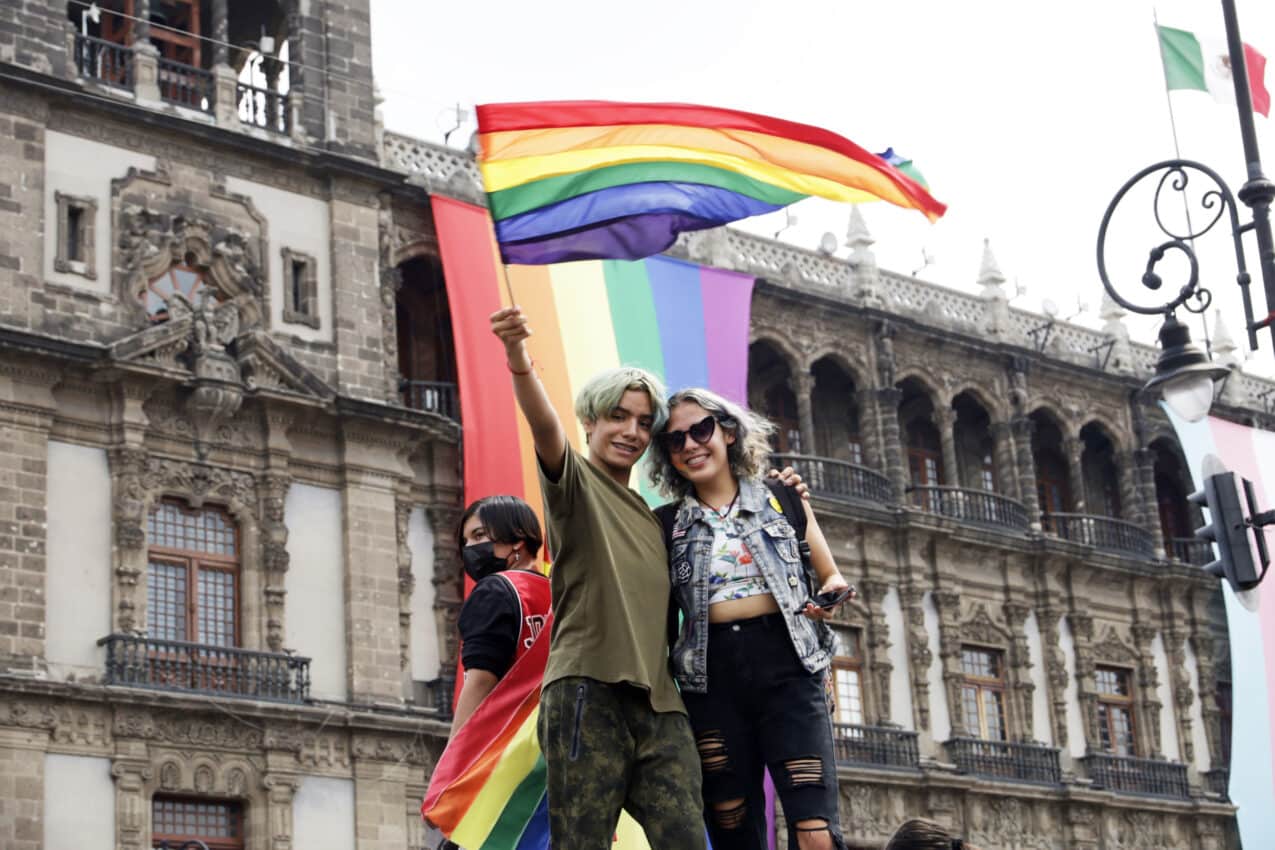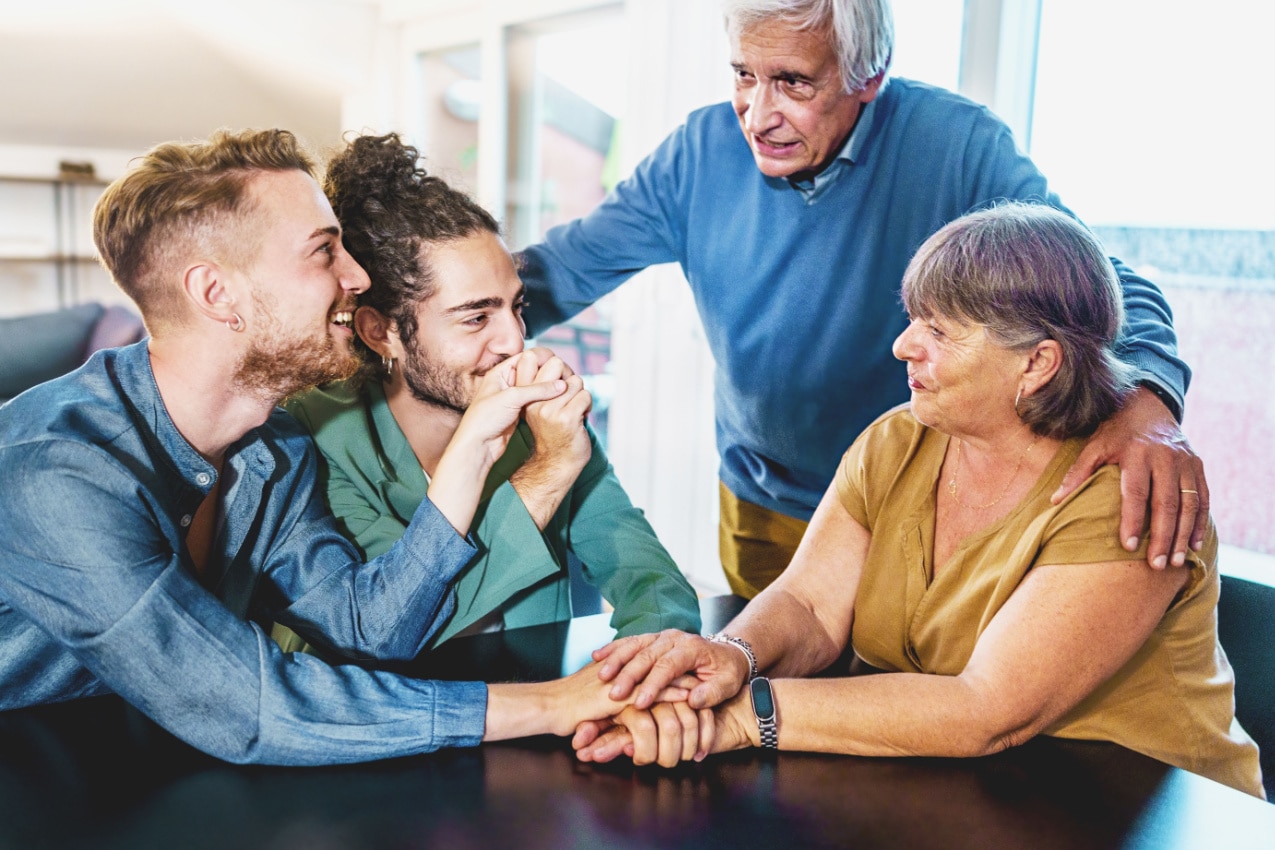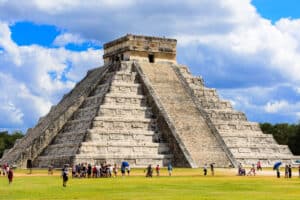Mexico’s views on homosexuality are complex and have evolved over time, reflecting a blend of cultural, historical, and legal influences.
If you find yourself there for tourist reasons, because you’re moving there, or someone close to you is, and you want to make sure they’re safe and accepted, you are likely curious about this issue.
If that’s the case, we’ve done the digging, so you don’t have to. Here’s a thorough overview of Mexico’s stance on LGBTQ+ — including information on the legal frameworks, historical records, attitudes, personal experiences, and more.
LGBTQI: Is It Legal in Mexico?

In Mexico, it’s legal to identify as a lesbian, gay, bisexual, transgender, queer, or intersex person (LGBTQI). The state decriminalized homosexuality in 1871, more than a century before the United States.
Beginning in 2010, Mexico City was the first city in Latin America to legalize same-sex marriages. As of 2023, all of Mexico’s 32 states have fully legalized same-sex marriages.
Adopting a kid with a same-sex spouse is also legal, though not everywhere. Same-sex adoption is legalized in 11 states, including Mexico City, Coahuila, Baja California, Campeche, Colima, Nayarit, Oaxaca, Quintana Roo, Jalisco, San Luis Potosí, and Michoacán.
Organizing LGBTQI events is also legal in Mexico. In 1979, Mexico City introduced its first LGBT pride parade, and in 2003, it hosted its first lesbian pride march. Guadalajara, too, has long supported such marches, with the first taking place in 1996. Today, in addition to Mexico City and Guadalajara, ten other cities host pride parades on a yearly basis, including Mérida, Monterrey, Acapulco, Puebla, Tijuana, Cuernavaca, Veracruz, Chilpancingo, Xalapa, and Tuxtla Gutiérrez.
LGBTQI Statistics: What Do the Numbers Say?
In 2021, over 5.1% of the Mexican population, or little more than 5 million people, self-identified as LGBTQ. Around 2.4 million of these individuals identified as bisexual, 1.2 million as gay, and 500,000 as lesbians.
There are over 315,000 transgender and non-binary individuals living in Mexico, but only 13,025 of them — roughly 4% — have updated their legal paperwork to reflect their new identity and gender.
Almost 60% of Mexicans agree that couples of the same sex deserve to be entitled to adopt children. In 2020, only 5 such adoptions were registered, accounting for around 0.2% of total adoptions in the whole of Mexico.
The states with the largest population of LGBTQI people in Mexico are as follows:
- State of Mexico (489,600)
- Mexico City (310,800)
- Veracruz (307,900)
- Jalisco (298,300)
- Nuevo León (286,500)
- Puebla (267,100)
- Guanajuato (228,000)
- Chiapas (215,500)
- Oaxaca (211,500)
- Guerrero (186,000)
As of 2021, 2/3 of Mexicans accept LGBT individuals coming out to the public about their gender or sexuality. However, only 1/3 of Mexicans favor LGBT people kissing or holding hands in public.
LGBTQI Discrimination: Is There Any?
Mexico was Latin America’s second-worst country for trans people in 2021.
From 2014 to 2021, a total of 209 anti-LGBTQ+ hate crimes were reported in Mexico. The biggest number of crimes was reported in 2019, with around 75 incidents, and in 2018, with 36.
Nearly 60% of the victims were classified as homosexual. Trans women were the primary target of such crimes, accounting for 44.5% of the reports. Gay men came in second, accounting for 40.7% of the reported victims.
LGBTQI Safe Areas: Where Can Queer People Feel Accepted & Free?

The Zona Rosa (Pink Zone) in Mexico City is the ultimate LGBT community hub, with over 50 gay bars and nightclubs welcoming LGBTQI people and allies.
Additionally, CNN named Puerto Vallarta the “top gay tourist destination” in the state of Mexico. In addition to the yearly LGBTQ+ parade, there are numerous hotels, tours, drag shows, and venues that host and celebrate the LGBTQ+ community there.
Apart from these two, Guadalajara is also a relatively safe destination for the LGBTQI community. Other cities include the border town of Tijuana, the coastal gem Cancun, the mountainous city Monterrey, the central cities Puebla and León, and the port city Veracruz.
LGBTQI Safety Tip
Mexican law protects the LGBTQ community, but culture can be stronger than printed law.
While the community is welcome in LGBTQ bars, nightclubs, hotels, parades, etc., outside of those venues and events, things can be different.
Kissing and holding hands in public may be perceived as rude by others, thus it’s best to be discreet in public. The U.S. State Department advises LGBTQI citizens heading to Mexico to keep in mind that:
“Due to sporadic reports of violence targeting LGBTQI+ individuals, U.S. citizens should exercise discretion in identifying themselves publicly as LGBTQI+.”
We know you mean no harm and simply want to live your life — but for your own safety and the protection of those around you, it’s best to be careful.
LGBTQI Fun Fact: Mexico Has Had a ‘Third Gender’ Since Ancient Times
Did you know that Mexico’s ancient Zapotec civilization recognized the existence of a ‘third gender’ known as ‘muxes’?
That’s right. The Zapotec civilization thrived in what is now the Isthmus of Tehuantepec region of the state of Oaxaca, with archaeological evidence dating back to 500 BCE.
In the Zapotec tribes, Muxes were born male but later in life chose to dress and live as women. Muxes engaged in activities normally associated with women, such as caregiving, household chores, creating artistic crafts, and other typical women’s activities of that time.
Muxes have long been an important part of the Zapotec community, and their way of life is a part of Zapotec culture to this day — there’s a three-day festival held in Oaxaca: Vela de las Intrepidas in their honor.
Conclusion
This concludes our journey throughout the current landscape of LGBTQ+ rights in Mexico. So, what do you think? Too strict or just the right amount of liberal?
There is still progress to be made for LGBTQ+ rights; however, Mexican law protects the community to some degree, allowing the freedom of marriage and adoption of children. Mexico’s most beautiful cities are labeled as LGBTQI-friendly, with tons of fantastic venues where these marginalized communities can feel free. And let’s not forget the pride parades that happen annually — they are a great way to see how the country of Mexico celebrates the community.
Link to: Mexico Travel Guide for 2023
Link to: The Cost of Living in Mexico
Link to: Mexico Safety 2023: How Safe is Mexico for Travel?
Link to: The Best Time to Visit Mexico City
Link to: Best Time to Visit Puerto Vallarta
Link to: Tijuana Safety 2023: How Safe is Tijuana for Travel?
Link to: Best Time to Visit Cancun
Link to: Monterrey Safety 2023: How Safe is Monterrey for Travel?



